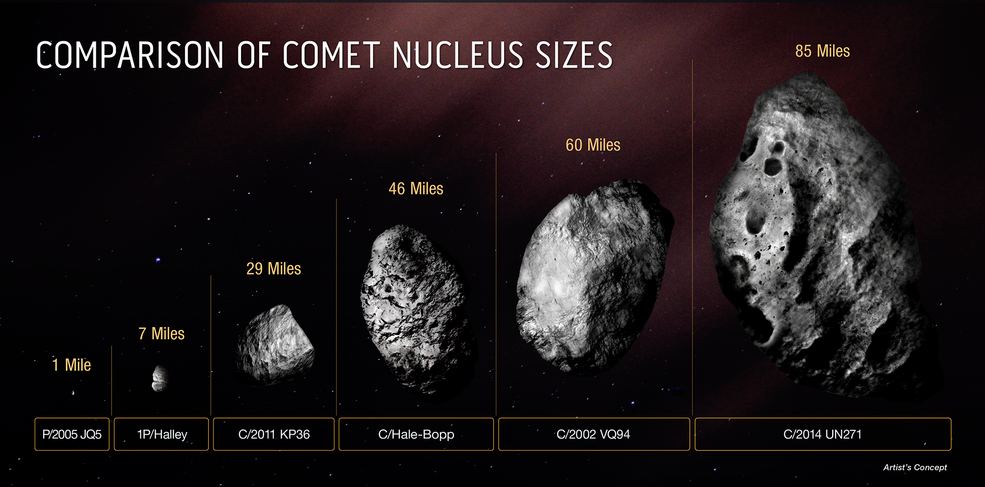It’s official. Comet C/2014 UN271 (Bernardinelli-Bernstein) has the largest nucleus ever seen in a comet. The gargantuan comet was discovered in the fall of 2021, and in January 2022, astronomers turned the Hubble Space Telescope to ascertain more details and determine the exact size.
NASA said a team of scientists has now estimated the diameter is approximately 129 km (80 miles) across, making it larger than the state of Rhode Island. The nucleus is about 50 times larger than other known comets. Its mass is estimated to be a staggering 500 trillion tons, a hundred thousand times greater than the mass of a typical comet found much closer to the Sun.
Continue reading “Hubble Confirms Comet C/2014 UN271 is an Absolute Unit, Astronomically Speaking”
